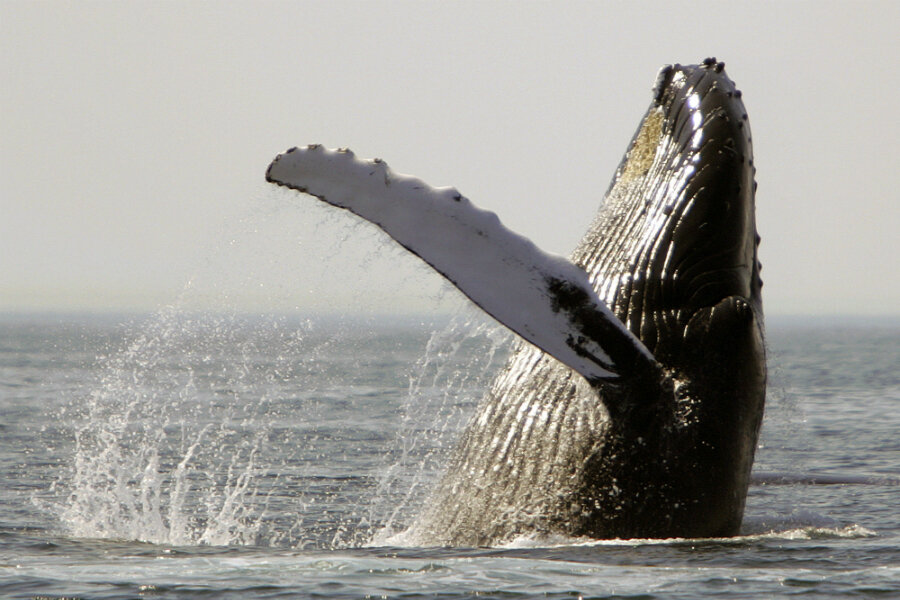Despite recovery, humpback whales still suffer from ship strikes
Loading...
Decades after most countries retired their harpoons, whales still face threats from fishermen, ships, and coastal pollution. But one species that seemed to have overcome these challenges was Megaptera novaeangliae, better known as the humpback whale.
Heavily hunted by the early 20th century, an international whaling moratorium and protection under the US Endangered Species Act (ESA) gave humpbacks the breathing space they needed to recover.
From 1986 to 2008, the whales’ numbers rose to 60,000 worldwide, and their status on the International Union for the Conservation of Nature’s “Red List” improved from “Endangered” to “Least Concern.” By last September, the National Oceanic and Atmospheric Administration (NOAA) announced that nine of the 14 distinct humpback populations no longer warranted ESA protection. Last year, one was even spotted in the Hudson River.
But a study published Tuesday in the journal Marine Mammal Science puts an asterisk on this progress. Close to shore, ship collisions threaten several species of whales, and these strikes may be greatly underreported for one humpback population in the Gulf of Maine.
“There are a lot of whales getting hit by small vessels, and there may very well need to be some management actions around high-density whale areas,” Scott Kraus, chief scientist for marine mammals at the New England Aquarium, told CBS.
Ship strikes can either kill whales outright or leave them with debilitating scars. In US waters, the federal government advises mariners that “any whale accidentally struck ... should be reported immediately to the Coast Guard.”
Humpbacks, which summer in the waters off New England, weren’t figuring prominently in these reports. In their report, the researchers noted that “between 2004 and 2013, NOAA's Northeast Region's Office of Law Enforcement had only received one report of a vessel strike (initially reported as harassment) involving a humpback whale.”
But rather than rely on captains’ reports, the researchers instead focused on the telltale scars that propellers and ship hulls leave on whales that survive a strike, compiling more than 210,000 photos of 624 individual whales sighted in the Gulf of Maine’s Stellwagen Bank National Marine Sanctuary between 2004 and 2013. Tracing individuals’ gashes, they concluded that “at least 14.7 percent of southern Gulf of Maine humpback whales showed evidence of at least one injury consistent with a vessel strike.”
In a sobering turn for the humpback’s recovery, this finding likely means that whale strikes have been underreported. Given the wide variety of vessels – fishing trawlers, yachts, commercial whale-watching boats – that ply these waters, the study’s authors recommend further research to determine which vessel classes are the worst offenders.
More data, in turn, could help curb the number of strikes. In 2014, The Christian Science Monitor’s Noelle Swan reported that “new research suggests that small adjustments to shipping lanes approaching San Francisco and Los Angeles could vastly improve the long-term survival” for the blue whale.
Closer to the humpback’s New England summer home, in 2008 the National Marine Fisheries Service (NMFS) aimed to protect the North Atlantic right whale by requiring all vessels 65 feet or longer to reduce speed in designated “seasonal management areas.” The following years saw no right whale strikes in the area, a result that, according to biologists, suggests that “the rule has been effective at reducing right whale deaths.”
Those measures haven’t been much help to the humpbacks, but Alex Hill, the study’s lead author and a scientist with Whale and Dolphin Conservation, sees a similar impact for her research. “Long term studies can help us figure out if our outreach programs to boaters are effective,” she told CBS, “what kind of management actions are needed and help to assess the health of the population.”








